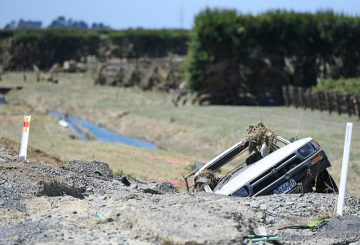New Zealand citizens and residents say the government’s solution to reuniting them with their overseas partners has led to unexpected, unfair and dangerous consequences.
Some are crying foul over a two-tier system allowing border exemptions to partners from richer visa-waiver countries.
Those left out of the exemptions say they are resorting to flying into Covid-19 danger zones to live, sort visas and return with their partners.
It has been an emotional rollercoaster for some couples, who were caught up in the saga of arranged marriages that culminated in a government decision to grant visitor visas to overseas partners.
A change in decision-making rules on partnership visas last year, and comments from then coalition partner New Zealand First led to that decision, and a reassessment of up to 1300 refused visa applications.
Many couples were then given the chance to live together in New Zealand, with the partner on a visitor visa, and use that time to meet the requirements for a partnership visa.
It looked like a reprieve, and many couples thought they were reaching the end of their wait to be reunited – but it is partly that solution that has led to another year apart.
When the border closed, partners preparing to join their New Zealand-citizen or resident spouses only held visitor visas – which have since expired – and so subsequent changes to allow exemptions for partnership visa holders have not helped them.
One man, who asked not to be identified, has been waiting two years for his wife to join him from India after their arranged marriage in December 2018.
His wife was finally granted a visitor visa in February but then the border closed. He decided to return to his home country and apply for her border exemption while he was there, but her visitor visa had expired by then – and his annual leave had also run out – so he could not await the necessary approvals.
It cost him $6000 in flights and quarantine – his employer had allowed him leave at a busy time – and he came back empty-handed.
“Somehow my employer let me go and did arrangements for me for four weeks so they were quite disappointed as well that that she couldn’t come with me. It’s happening for the third time now. I’ve been back home three times but three times unsuccessful.
“So you end up spending all your savings – one year’s savings – and then you come back without any result.”
Another New Zealand citizen, originally from India, said there was a 2000-strong Facebook group of affected couples and it was becoming more and more common for the New Zealand partner to go to the home country to fetch their spouse.
“Everyone is now travelling back to India,” he said. “That’s the only option Immigration’s leaving us – to travel back to India, when you reach there you apply, wait for a couple of months until they are approved and travel together with your partner. Like what a stupid thing – why do you want to risk two lives, why do you want a New Zealander to travel back to India to fetch their partner and come back. What’s the logic behind that?”
His wife had resigned her job and sold her house in readiness for a flight in March, but the border closed.
“Eventually her visa lapsed in October. At this moment it’s 17 months now we’re living apart from each other just after getting married. I’m still alright here because I’ve got a job, but she has to lose everything, her job, her house and everything.
“It is very difficult, she is very emotionally attached. When Chris Hipkins talked about extending the border closure for 18 months she cried on the phone. Every second day she’s just crying, I’m crying over here because we can’t see a future now. The government is not giving us any date, saying hey this is the plan, or this is the time we’ll start accepting something.”
No explanation had been given about why partners from Australia and visa-waiver countries had been allowed a border exemption, he said.
When his wife applied for a critical purpose border exemption, he was refused because he would not be accompanying her and the refusal also expressed doubts about their relationship – despite it having been recognised in the earlier visa approval.
“They are allowing the partner to travel by themselves from 60 visa-waiver countries, so if you’re from the United States or the UK your partner can travel alone. But if you’re from India which is not a visa-waiver country or a few other Asian countries, the only option they give you is to go back and fetch your wife.
“There are so many stories on the Facebook group. People have sold their houses and resigned from jobs, sold everything, gone back to India, and they’re waiting three or four months for the visa to issue and they come back over here.”
That risked not only health through Covid infections, but also homelessness and unemployment, he added.
Immigration lawyer Alastair McClymont said many people’s hopes had already been raised and dashed twice following the arranged marriage saga last year.
“It was people from the South Asian countries in particular that were stuck because they tended to go back and find partners overseas because they were not living in India,” he said.
“Their partner applied for a visa but they were not allowed to come in so the government created a culturally arranged marriage visa category. It was claimed that that solved the problem but that wasn’t actually really the problem at all. It wasn’t about arranged marriages, but that the couples were not living together after the marriage – because the sponsor returns to New Zealand. Those same people are also now stuck over the travel exemptions.
“It wasn’t considered a partnership, it’s considered as a relationship. And if you’re considered as a relationship you’re only given a general visitor’s visa. And if you’re given a general visitor visa, then you don’t qualify for the travel exemption. It’s discriminating against those types of relationships.”
RNZ asked Immigration Minister Kris Faafoi when those people would hear about exemptions and why partners from visa-waiver countries were being treated differently.
In a statement, he said Covid-19 had created huge disruptions, damage and risks.
“I feel for such families,” he said. “But the government must maintain the primary priority to keep the virus from spreading through our communities. Strict border controls, coupled with managed isolation, quarantining and testing systems are key to that and underpin immigration policy while Covid remains a clear and present global threat.
“Where we can, and it is deemed safe to do so, we are making adjustments to immigration settings. Easing rules around New Zealanders’ partners and dependents from Australia and visa-waiver countries was one change which was considered manageable, as is the decision to allow in some normally resident temporary visa holders.
“We will continue to review settings but, at this time, I cannot give specific timeframes or settings where further changes might be made, such as with general visitor visas.”
Source: RNZ News – www.rnz.co.nz
























































-helped-regain-her-strength-and-balance-using-Nymbl-after-a-fall.-660x440.jpg)


